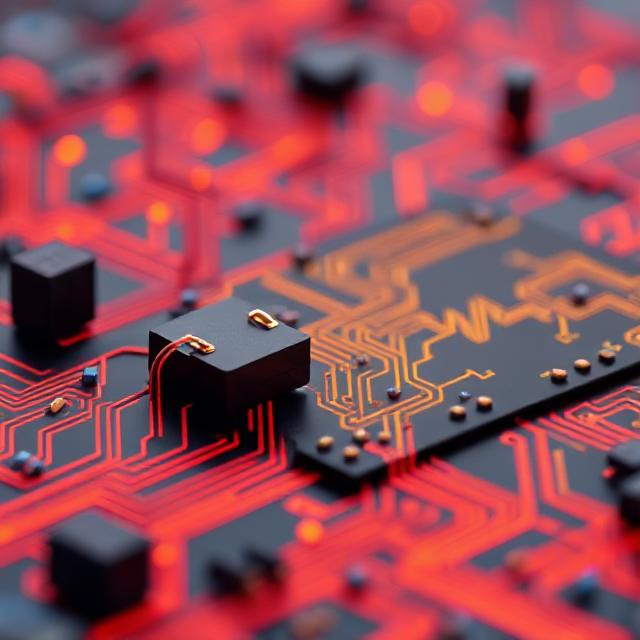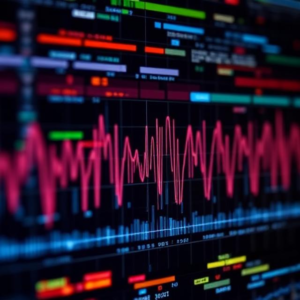What is Speech Recognition?
Speech recognition is the technology that allows computers and devices to understand spoken language. It converts what you say into text or an action. For example, when you use Siri, Google Assistant, or Alexa, the device listens to your voice, converts it into text, and then responds or performs the task you requested.

How Does Speech Recognition Work?
- Sound Capture: The first step is capturing the sound of your voice through a microphone.
- Signal Processing: The sound is turned into digital data, which is a series of numbers that represent the sound waves.
- Feature Extraction: The system looks for important features in the speech, like vowels, consonants, and pitch. This helps it recognize specific sounds.
- Pattern Matching: The system compares these features to known patterns in its database to identify the words or phrases you’re saying.
- Understanding: Once it knows the words, it can take actions like displaying text or responding with information.
Example of Speech Recognition:
- You: “What’s the weather today?”
- Assistant: “The weather today is sunny with a high of 75°F.”
The assistant recognized the sound of your voice, turned it into text, and understood that you wanted information about the weather.
What is Audio Signal Processing?
Audio signal processing involves working with sound signals (like your voice, music, or environmental noise) to improve, modify, or analyze them. It can be used in many applications, from enhancing speech recognition systems to making music sound better or removing unwanted background noise.
Key Concepts in Audio Signal Processing:
- Sound Waves:
- Sound waves are vibrations in the air that we hear as sound. These vibrations create audio signals, which can be captured by microphones and turned into digital data for processing.
- Sampling:
- In digital audio, sound is captured as a series of samples (individual measurements of the sound wave) at regular intervals. This turns continuous sound into a digital signal that a computer can work with.
- For example, a sample might capture the sound wave every thousandth of a second (or more frequently, depending on the quality).
- Filtering:
- Filtering is used to remove unwanted sounds. For instance, if you’re talking in a noisy room, a filter can help eliminate background noise (like a fan or other voices) so that only your voice is heard clearly.
- Compression:
- Audio compression reduces the file size of audio data without losing much quality. This is useful for storing or transmitting audio data efficiently (e.g., MP3 files).
- Echo Cancellation:
- Echoes happen when sound bounces back from walls or surfaces and is picked up again by the microphone. Echo cancellation is used to remove these unwanted reflections, making audio clearer.
- Noise Reduction:
- This process identifies and reduces background noise, like hums, buzzes, or static, from the audio. It’s especially useful in environments where background noise might interfere with clear communication.
How Speech Recognition and Audio Signal Processing Work Together
For speech recognition to work well, it relies heavily on audio signal processing. Here’s how the two go hand-in-hand:
- Pre-processing the Sound:
- The first thing the system does is process the audio signal to make it clearer. This involves removing noise and enhancing the important parts of the speech (like making sure the voice sounds clear even if there’s background noise).
- Converting Sound to Digital:
- The sound is turned into digital signals using techniques like sampling. The computer then breaks down the audio into smaller chunks, looking for patterns in these chunks that match the words it knows.
- Feature Extraction and Recognition:
- Once the sound is clean and digitized, the system uses speech recognition algorithms to extract important features like vowel sounds, consonant sounds, and the rhythm of speech. This helps the system figure out what words you’re saying.
Real-World Examples of Speech Recognition and Audio Signal Processing
- Voice Assistants (Siri, Alexa, Google Assistant):
- These systems use both speech recognition and audio signal processing to understand what you say and respond accurately. They work in noisy environments by filtering out background sounds and focusing on your voice.
- Transcription Services:
- Applications like Google Docs Voice Typing or Dragon NaturallySpeaking use speech recognition to convert spoken words into text. They often use audio signal processing to improve accuracy in noisy environments.
- Hearing Aids:
- Modern hearing aids use audio signal processing to improve the clarity of sounds. They can filter out background noise, amplify speech sounds, and even adjust the frequency response to match the hearing needs of the user.
- Speech-to-Text in Videos:
- Video platforms (like YouTube) use speech recognition to automatically generate subtitles for videos. They rely on audio signal processing to clean up the audio and recognize speech in various accents and languages.
Summary:
- Speech Recognition is the technology that allows devices to understand and process spoken language, converting it into text or actions.
- Audio Signal Processing involves working with sound signals to improve, modify, or analyze audio, helping systems like speech recognition work more effectively by reducing noise, enhancing clarity, and managing sound quality.
- These technologies are used in voice assistants, transcription services, hearing aids, and more to make communication with devices easier, clearer, and more efficient.
Together, speech recognition and audio signal processing make it possible for machines to understand human speech and provide responses or actions based on what is said.











